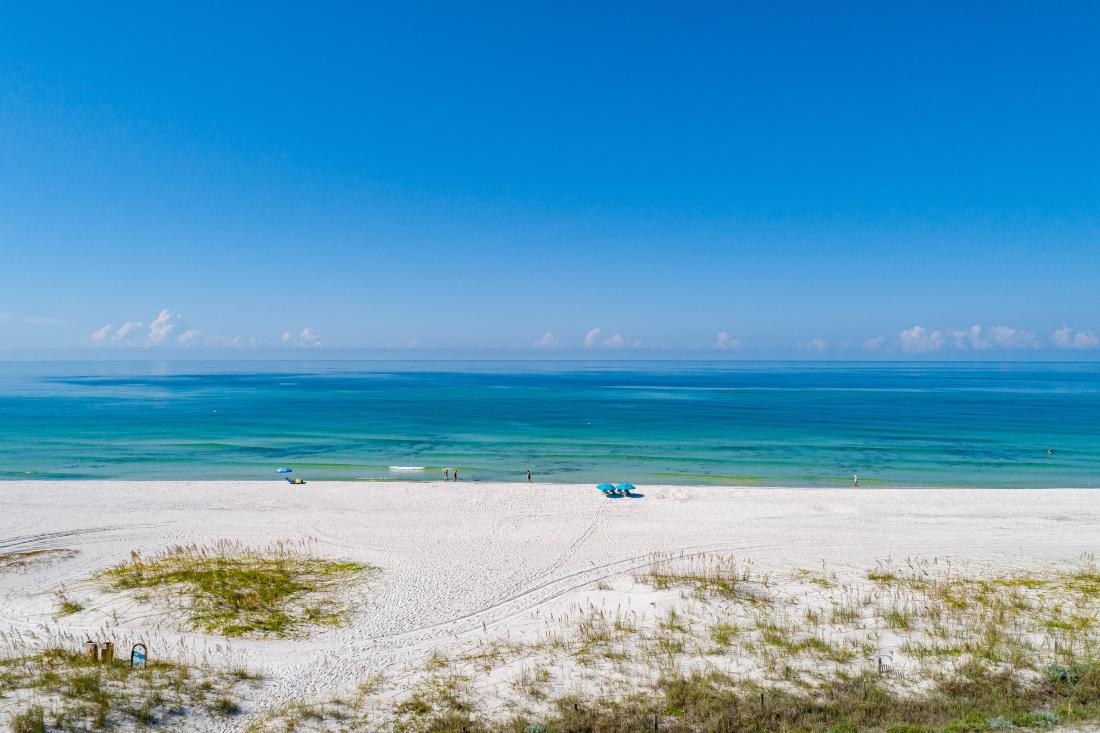


Beaches, those serene landscapes where land meets sea, are more than just popular vacation spots; they are fascinating geological formations with a story to tell. But how do you think they formed? How does one beach differ from the other? Let’s find out.

Indeed, the creation of a beach is a slow yet dynamic process, showcasing nature’s relentless artistry. Weathering and erosion are the primary agents in this process.
Weathering involves the breakdown of rocks and minerals through contact with Earth’s atmosphere, water, and biological organisms. This can occur physically, like temperature changes causing expansion and contraction, or through chemical processes, such as acid rain dissolving limestone.
Erosion then takes over, where wind, water currents, and waves play their part. As rocks break down into smaller particles, they are carried away by these natural forces. Coastal erosion, driven by the relentless energy of waves and currents, is particularly potent in transporting these materials.
Rivers are nature’s conveyor belts, moving sediments from inland areas to the coast. Over time, rivers erode their banks and carry a mix of sand, silt, and other materials downstream. This material, known as alluvium, is crucial in beach formation. As rivers meet the ocean, their velocity decreases, leading to the deposition of these sediments along the coastline. The size and composition of these sediments can vary greatly, depending on the geology of the river basin.
Delta formation is a prime example of this process. Deltas are created where rivers deposit large amounts of sediment at their mouths, often forming rich, fertile land and unique coastal features. The Nile Delta in Egypt and the Mississippi Delta in the United States are classic examples of this phenomenon.
Tides and waves are the final, perhaps most dynamic, actors in beach formation. Tides, caused by the gravitational pull of the moon and the sun, lead to daily fluctuations in sea levels. These tidal movements contribute to the redistribution of sediments along the coast.
Waves are powerful shaping forces generated by wind blowing across the sea’s surface. They can both erode and deposit materials, sculpting the coastline. Wave action determines the beach’s slope, the sand particles’ size, and the overall shape of the coastal landscape. For instance, stronger waves often carry larger, heavier sediment particles, leading to coarser, steeper beaches. Conversely, in areas with gentler waves, finer sediments deposit to create flatter, softer beaches.


White sand beaches are not just visually stunning; they result from a fascinating geological process. In addition to Boracay, places like the Maldives, and Whitehaven Beach in Australia, and the white sand beaches along Florida’s Scenic Highway 30A are prime examples. The high quartz content, often accompanied by eroded limestone, gives these beaches their distinctive sparkling appearance. Over time, wave action pulverizes coral and shells, contributing to the fine, powdery texture of the sand. The brilliance of these beaches is not just a treat for the eyes but also a reflection of the Earth’s dynamic processes.
Pink sand beaches are among nature’s most delicate wonders. Apart from Harbour Island, these blush-colored sands are found in places like Pink Beach in Komodo, Indonesia. The microscopic foraminifera, with their red and pink shells, thrive in coral-rich areas. When these organisms die, the wave action crushes their shells and mixes them with the white sand, creating a gentle pink hue. This phenomenon is a testament to the intricate relationship between marine life and geological formations.
The creation of black sand beaches is a powerful display of nature’s force. Beyond Iceland, such beaches can be found in Hawaii, New Zealand, and Santorini, Greece. These locales typically associate themselves with active or historical volcanic activity. The black sand forms when molten lava enters the ocean, cools rapidly, and shatters into sand-sized basalt particles. This process creates beaches that are not only visually striking but also tell a story of the Earth’s fiery interior.
Like those in Cinque Terre, Rocky and pebble beaches are shaped by a relentless natural sculptor – the ocean. Over thousands of years, the constant battering of waves against rocks breaks them down into smaller, smoother stones. Pebble beaches can also be found in places like Nice, France, and Brighton, England. These beaches remind us of the relentless power of water and time, continuously shaping our coastlines.

Human touch alters sands: the stark shift in beach ecosystems.
Human activities have a significant impact on beach composition and health. Coastal development, mining, and dredging activities can drastically alter the natural state of beaches. In some areas, beaches artificially replenish with sand to combat erosion, a process that can change the beach’s natural character. This highlights the need for sustainable practices to preserve the delicate balance of these coastal ecosystems.
The type of beach present in a region directly reflects its geological makeup and climatic conditions. Regions with a history of volcanic activity are more likely to have black sand beaches, while areas with coral reefs often boast white or pink sands. The Mediterranean coast, known for its rocky and pebbly beaches, reflects the region’s geological history, marked by tectonic activity and erosion.
Located on the Gulf Coast of Florida, Siesta Key is more than just another beach; it’s a geological marvel. The sand here is 99% quartz, originally part of the Appalachian Mountains. Over millennia, this quartz eroded and was carried down rivers into the Gulf of Mexico. The pure quartz composition gives the sand its dazzling white color and a remarkable property: it doesn’t retain heat. This means that the sand remains cool underfoot even during the hottest summer days, providing a comfortable beach experience.
Elafonissi Beach, on the southwestern coast of Crete, Greece, is like a scene from a fairytale. Its pink sand creates a stunning contrast against the turquoise waters. This unique coloration is due to millions of crushed shells and coral, particularly from tiny marine creatures known as foraminifera. These creatures have a reddish-pink shell, which, when mixed with the white sand, creates the beach’s famous blush hue. This natural phenomenon is a delicate reminder of the intricate balance of marine life.
Reynisfjara Beach, near Vík in southern Iceland, is a stark reminder of the island’s volcanic nature. The beach is famous for its smooth, black sand and imposing basalt columns that appear to rise out of the sea. The sand here forms from eroded volcanic rocks, particularly basalt, a dark-colored lava that cools rapidly when it reaches the ocean. The beach is known for its dramatic beauty and powerful and sometimes dangerous waves, reminding visitors of the raw power of nature.
Nice’s pebble beaches, located along the French Riviera, offer a distinctly different beach experience. Instead of soft sand, the shores cover themselves with smooth, rounded pebbles. These stones result from thousands of years of water erosion, which has smoothed and rounded each pebble to perfection. The sound of the waves rolling these pebbles back and forth creates a unique, rhythmic sound, adding to the charm of the beach. The pebbles are predominantly gray and blue, complementing the azure hues of the Mediterranean Sea.
Beaches are more than just holiday destinations; they are natural wonders shaped by geological and climatic forces. From the white quartz sands of Florida to the volcanic black beaches of Iceland, each beach has a unique story to tell, reflecting the diverse and dynamic nature of our planet.


